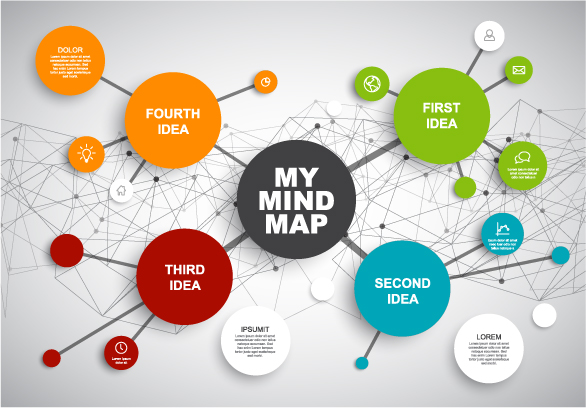# Mindmapping
- Purpose
- Understanding the mental map of the user
- Time required
- 10 to 60 minutes
- Participants
- UX team, user
- Level of experience
- Beginner

# Summary
Mindmaps are representations that help to visually map and analyze connections and correlations between a number of ideas. Understanding connections is a prerequisite for the development of designs.
# Result
Mindmaps can be used to explore the relationships between ideas. They also help to identify and organize ideas and approaches. They also serve as a summary and visualization of information.
# Approach
- Start with the central term or thought. Write it in the middle of a sheet of paper and frame it.
- Write down the first words that come to mind. Add pictures or symbols if necessary.
- Identify significant keywords, images and symbols. These are the main nodes.
- The other terms and elements are the other nodes. Connect them when there is a connection or relationship between them.
- When necessary, vary the connections by thicker or dashed lines and/or colours.
# Time of use
Mindmaps are the first step for the development of designs and solutions. They can be useful at any stage of the project. They are recommended when a context or user needs need to be explored or plans for further action need to be made.
# Tools and Templates
- Paper or whiteboard
- Pen
# Advantages
The greatest advantage is the organization and structuring of the information, which shows the connections between the individual ideas.
# Disadvantages
Mind maps are too limited for some use cases because cross-connections are difficult to map. In addition, the tree-like overview can be lost if there are numerous branches.
# Hints
Visualize the words in the mind map clearly and structure the content meaningfully. Use colors and images for visual impressions.
# Sources
- Curedale: Design Thinking: process and methods manual (opens new window) Design Community College Inc. ISBN: 9780988236240.